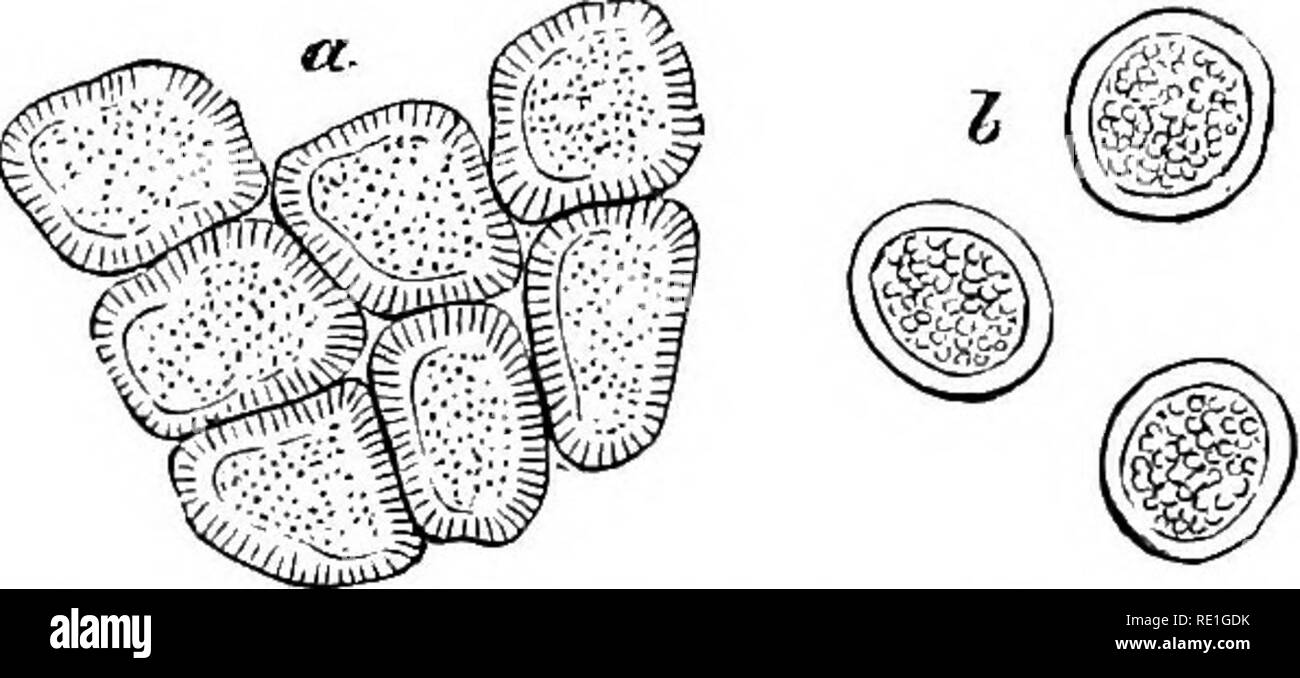. Fungi; their nature, influence, and uses;. Fungi. Fig. 107.—Cells and pseudospores of Mcidlum berberidis. Montague has, however, described a Fuccinia herheridis on leaves of Berheris cjlauca from Chili, which grows in company 5^. Fio. 108.—Cells and pseudospores of Mcidium. graveoUns. with ^cidium berberidis. This at first sight seems to contradict the above conclusions; but the Mcidium which from the same disc produces the puccinoid resting spores, appears to be dif- ferent from the European species, inasmuch as the cells of the wall of the sporangium, are twice as large, and the spores de-

Image details
Contributor:
The Book Worm / Alamy Stock PhotoImage ID:
RE1GDKFile size:
7.2 MB (262.8 KB Compressed download)Releases:
Model - no | Property - noDo I need a release?Dimensions:
2349 x 1064 px | 39.8 x 18 cm | 15.7 x 7.1 inches | 150dpiMore information:
This image is a public domain image, which means either that copyright has expired in the image or the copyright holder has waived their copyright. Alamy charges you a fee for access to the high resolution copy of the image.
This image could have imperfections as it’s either historical or reportage.
. Fungi; their nature, influence, and uses;. Fungi. Fig. 107.—Cells and pseudospores of Mcidlum berberidis. Montague has, however, described a Fuccinia herheridis on leaves of Berheris cjlauca from Chili, which grows in company 5^. Fio. 108.—Cells and pseudospores of Mcidium. graveoUns. with ^cidium berberidis. This at first sight seems to contradict the above conclusions; but the Mcidium which from the same disc produces the puccinoid resting spores, appears to be dif- ferent from the European species, inasmuch as the cells of the wall of the sporangium, are twice as large, and the spores de- cidedly of greater diameter.* The resting spores, moreovei', * We have before us an /i^cldtum on leaves o£ Berheris vidgarisy collected at 10. Please note that these images are extracted from scanned page images that may have been digitally enhanced for readability - coloration and appearance of these illustrations may not perfectly resemble the original work.. Cooke, M. C. (Mordecai Cubitt), b. 1825-; Berkeley, M. J. (Miles Joseph), 1803-1889. New York, D. Appleton and Co.